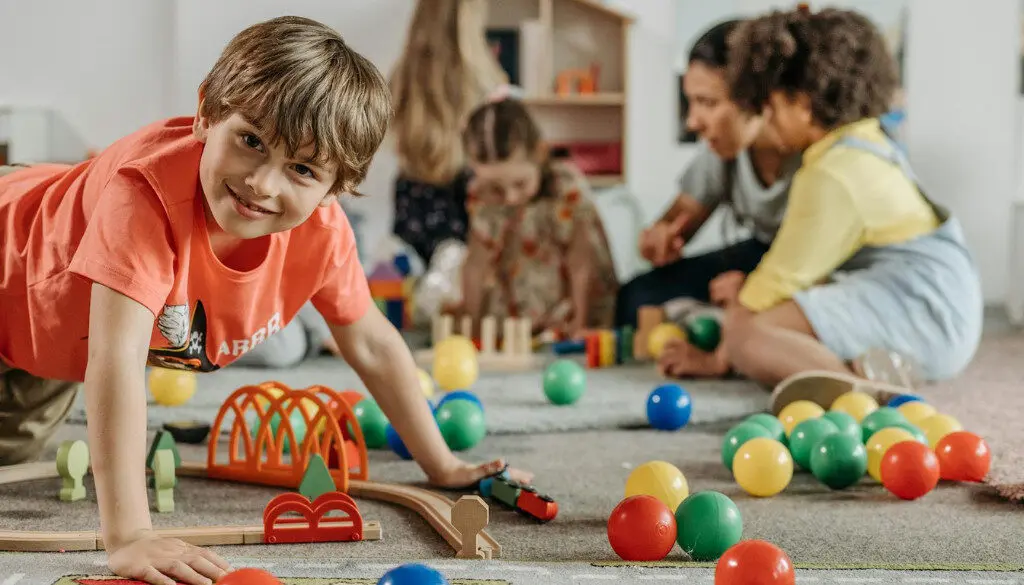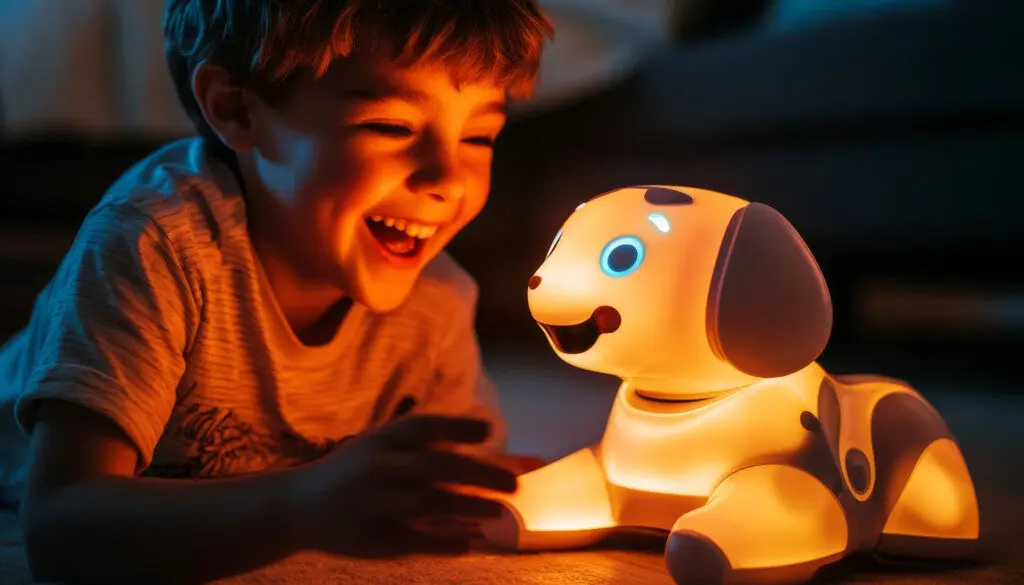Are you wondering when to start potty training for your little one? Most boys are ready between 18 and 30 months old.
Recognizing the signs of readiness is key for a smooth transition. These signs include staying dry for 2 or more hours, showing interest in the potty, and following simple instructions.
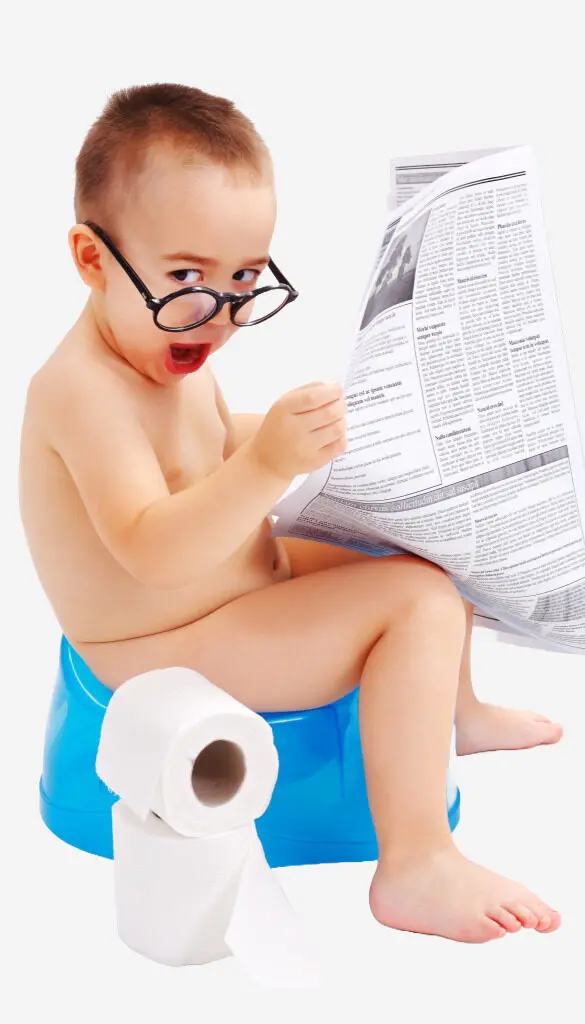
Understanding these signs and using effective strategies can make potty training less stressful. In this article, we’ll explore practical tips to help you potty train a baby boy successfully.
Key Takeaways
- Identify readiness signs in your baby boy.
- Use effective strategies to make potty training easier.
- Create a routine that works for you and your child.
- Make the potty training process less stressful.
- Achieve successful potty training with patience and consistency.
Understanding Potty Training Readiness in Boys
Knowing when a boy is ready for potty training is key. It’s a big step in a child’s life. Finding the right time to start is important for success.
Physical Signs of Readiness
Physical signs show a child is ready to start potty training. These include staying dry for two hours, regular bowel movements, and walking to the bathroom. Boys might also grunt or squat when they have a bowel movement.
| Physical Sign | Description |
|---|---|
| Staying Dry | The child can remain dry for at least two hours. |
| Regular Bowel Movements | The child has predictable bowel movements. |
| Walking to the Bathroom | The child can physically walk to the bathroom. |
Behavioral Indicators
Behavioral signs are just as important. A child showing interest in the potty, imitating others, and following simple instructions are big signs. These show the child is ready to learn.
“A child who shows interest in the toilet and is willing to imitate others is likely ready to start potty training.”
Cognitive Development Milestones
Cognitive development is key in potty training readiness. Being able to understand and follow instructions, communicate needs, and be aware of bodily sensations are important. Boys who can express their needs and understand simple directions do better in potty training.
- Understanding simple instructions
- Communicating the need to go
- Awareness of bodily sensations
By recognizing these signs, parents can tailor their approach. This makes potty training more effective for their child.
When Is the Best Time to Potty Train a Baby Boy?
Wondering when to start potty training your baby boy? It depends on their age, readiness, and your family’s life. These factors are key.
Age Considerations
Boys usually start potty training between 18 and 30 months. But, every child is unique. Some might be ready sooner or later.
Look for readiness signs. These include showing interest in the toilet, staying dry longer, and telling you they need to go.
| Age Range | Readiness Signs |
|---|---|
| 18-24 months | Showing interest in the toilet, staying dry for short periods |
| 2-3 years | Communicating the need to go, staying dry for longer periods |
Seasonal Timing Strategies
Some parents choose warmer months for potty training. This makes it easier for kids to learn without diapers.
But, timing isn’t everything. Pick a time when your routine is steady and not too busy.
Life Events and Transitions
Try to avoid potty training during big life changes. This includes moving or getting a new sibling. These times can be stressful and make training harder.
Essential Supplies for Boy’s Potty Training
The right equipment is key for potty training your little boy. Having the right supplies makes the process easier and more fun for both of you.
Potty Chair vs. Toilet Seat Reducer
Choosing between a potty chair and a toilet seat reducer is your first decision. A potty chair is a separate unit for the bathroom. A toilet seat reducer, on the other hand, fits on your toilet. Your child’s comfort and your bathroom setup will guide your choice.
| Feature | Potty Chair | Toilet Seat Reducer |
|---|---|---|
| Portability | Yes, can be moved around | No, fixed to the toilet |
| Cleaning | Easy to clean | Can be more challenging to clean |
| Transition | May require a transition to the toilet later | Directly uses the toilet |
Training Pants and Underwear
Training pants and underwear are must-haves for potty training. Training pants soak up accidents, while underwear makes your child feel like a “big boy.” Brands like Pampers Easy Ups and Pull-Ups are popular choices.
Boy-Specific Accessories
Boy-specific accessories like stickers or target practice tools can make potty training fun. They motivate your child to use the potty correctly and make the experience enjoyable.
How to Potty Train a Baby Boy: Step-by-Step Approach
Training a baby boy to use the potty can be broken down into simple steps. These steps include key elements that help your child master the potty. They work together to make the learning process smooth.
Introducing the Potty Concept
The first step is to introduce the potty to your baby boy. Make the potty chair or toilet seat reducer a welcoming place. Read books about using the potty or let him pick out big-boy underwear. This helps create a positive feeling about the potty.
Creating a Consistent Routine
Having a consistent routine is key for potty training success. Take your child to the potty at the same times each day. This could be when they wake up, after meals, and before bed. A consistent schedule helps your child learn when it’s time to go and cuts down on accidents.
Demonstration and Modeling
Demonstrating how to use the potty is very effective. Let your child watch you or an older sibling use the toilet. You can also use a doll to show the process. This helps your child understand the purpose and how to use the potty.
| Step | Description | Tips |
|---|---|---|
| 1. Introduce the Potty | Make the potty a familiar place | Read books, pick big-boy underwear |
| 2. Establish a Routine | Take your child to the potty at consistent times | After waking, after meals, before bedtime |
| 3. Demonstrate | Show your child how to use the potty | Use dolls or let them observe others |
By following these steps and staying positive, you can help your baby boy learn to use the potty well.
Standing vs. Sitting: Teaching Position Techniques
Choosing between sitting or standing for potty training is a big decision for parents. It impacts how well the child learns and feels about using the potty.
Benefits of Starting with Sitting
Experts suggest starting with sitting for both peeing and pooping. Sitting makes the child feel safe and steady on the potty. It’s also closer to how they sit in diapers.
When and How to Introduce Standing
When the child gets used to sitting, it’s time to try standing. This step comes after they’re confident sitting and want to pee like others do. Always be there to help and guide them.
Target Practice Games
Make learning fun with target practice games. These games have the child aim for a sticker or small object in the toilet. It’s a great way to improve their aim and make potty time exciting.
| Position | Benefits | Tips |
|---|---|---|
| Sitting | More stable and secure, familiar for bowel movements | Start with this position for both urination and bowel movements |
| Standing | Mimics others, can be more natural for urination | Introduce after mastering sitting, provide support |
Effective Communication Strategies During Potty Training
Clear and positive communication is key to a stress-free potty training experience. As a parent, how you talk to your child matters a lot. It’s not just about what you say, but also how you say it. Using the right words, being positive, and using body language are all important.
Using the Right Terminology
Using the right words for body parts and functions is important. For example, calling your child’s genitals by their correct name helps avoid confusion. This makes it easier for them to understand what you mean.
| Term | Consistency | Impact |
|---|---|---|
| Correct anatomical names | High | Reduces confusion, enhances understanding |
| Nicknames or vague terms | Low | May cause confusion, hinder progress |
Positive Reinforcement Phrases
Praise and positive reinforcement are very powerful during potty training. Saying things like “I’m so proud of you for trying” or “You’re doing a great job” can really help. It’s important to be real and specific with your praise to encourage good behavior.
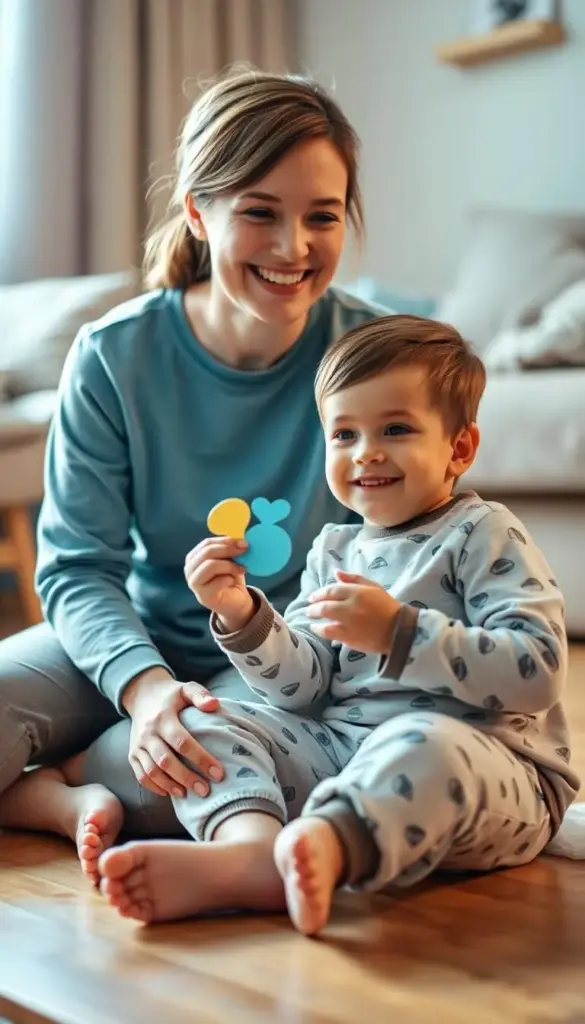
Non-Verbal Cues and Signals
Non-verbal cues, like a thumbs up or a sticker chart, are also very helpful. These visual signals can make good behavior more fun and rewarding. For example, a sticker chart for every successful potty use can really motivate your child.
By using these communication strategies, you can make potty training easier and less stressful for everyone.
Common Challenges When Potty Training Boys
Potty training a baby boy can be tough. It tests a parent’s patience. Knowing these challenges helps parents deal with them better.
Resistance and Refusal
Resistance to the potty is a big challenge. Some boys don’t want to sit on it or dislike the process. This can be because of discomfort or fear of the toilet.
Regression After Initial Success
Another issue is when boys start having accidents again after they’ve been successful. This can happen due to changes in routine, stress, or just a phase of development.
Distraction and Short Attention Span
Distraction is a big problem too. Boys often get easily distracted, leading to accidents. It’s important to find ways to keep them focused.
To understand these challenges better and find solutions, let’s look at some data:
| Challenge | Possible Cause | Strategy |
|---|---|---|
| Resistance | Discomfort or fear | Make the potty experience comfortable and engaging |
| Regression | Change in routine or stress | Maintain consistency and offer reassurance |
| Distraction | Short attention span | Minimize distractions and encourage focus |
By understanding and tackling these common challenges, parents can make potty training easier for their baby boys.
Tips to Successfully Potty Train a Baby Boy at Night
Nighttime potty training is a big step for a baby boy. It needs patience and a good plan. Knowing the difference between daytime and nighttime readiness is very important.
Daytime vs. Nighttime Readiness
Daytime and nighttime readiness are not the same. A child might show signs of readiness during the day. But, mastering nighttime control takes more time.
Limiting Fluids Before Sleep
Limiting fluids before bed is a good strategy. Encourage your child to drink more during the day. Then, cut down on fluids as bedtime gets closer. This can help avoid accidents at night.
| Strategy | Description | Benefits |
|---|---|---|
| Limit Fluids Before Bed | Reduce liquid intake in the evening | Lessens nighttime accidents |
| Establish Bedtime Routine | Create a calming pre-sleep routine | Helps child relax and stay dry |
| Use Protective Gear | Use training pants or underwear with extra absorbency | Eases cleanup in case of accidents |
Handling Nighttime Accidents
Accidents can happen even with the best plans. It’s important to stay calm and not scold your child. Instead, tell them it’s okay and encourage them to try again.
Understanding the differences in readiness, using strategies like limiting fluids, and being ready for accidents can help. This way, you can successfully potty train your baby boy at night.
Potty Training Away From Home
Potty training doesn’t have to be just for home. With the right strategies, you can potty train your child anywhere. Whether it’s the park, grandma’s house, or a vacation, being ready is key.
Portable Potty Options
Portable potties are a great way to potty train on the go. You can find everything from portable seats to travel-friendly chairs. Choosing the right portable potty depends on your child’s age and your needs. For example, a portable seat is good for older toddlers who know how to use a potty.
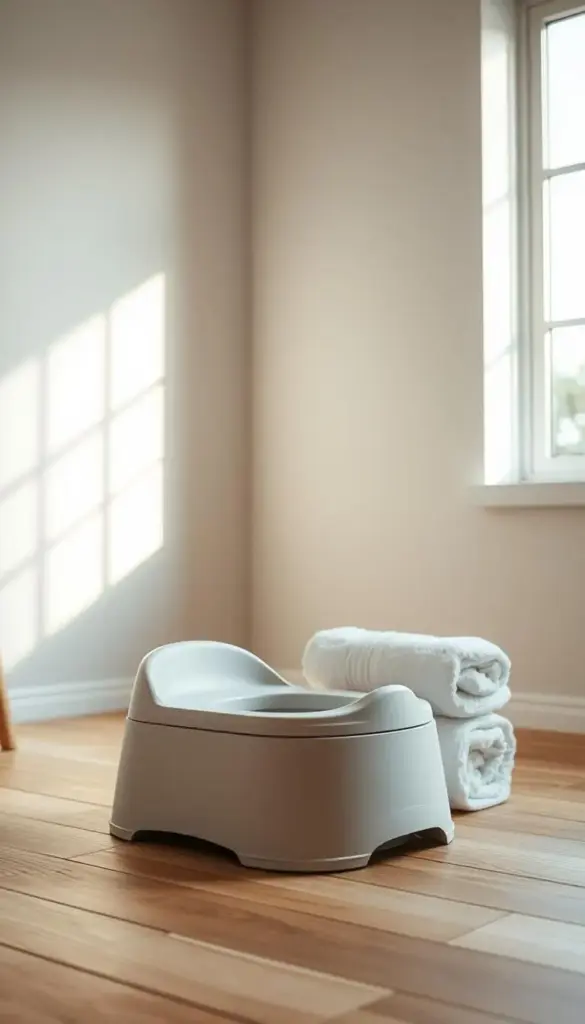
Public Restroom Strategies
Using public restrooms can be tough, but there are ways to make it easier. Look for child-friendly restrooms before you need them. Many places have family restrooms with changing tables and more space. Make using a public restroom a game or fun experience for your child.
Travel and Vacation Tips
When traveling, plan ahead. Pack a potty training travel kit with wipes, a portable potty, and extra clothes. Try to keep your child’s routine as much as you can. Also, have a change of clothes ready for accidents to avoid stress.
Dealing with Accidents Positively
Accidents are common during potty training. How we react is key. A positive attitude can greatly help your child learn.
Creating a Shame-Free Environment
It’s important to keep things supportive. I tell my child accidents are part of learning. It’s okay to make mistakes.
Clean-Up Procedures
Having a simple clean-up routine helps avoid fuss. I keep cleaning supplies ready. I also involve my child in cleaning up.
This teaches them responsibility and how to handle accidents.
Learning Opportunities from Accidents
Accidents can teach a lot. I remind my child to use the potty and encourage them to try again. This strengthens good habits and helps them understand potty training better.
Celebrating Milestones and Success
As you go through potty training, celebrating small wins is key. It’s important to see and honor your child’s efforts, no matter how tiny they are.
Reward Systems That Work
Using rewards can really help motivate your child. Try stickers, small treats, or special times to encourage them. “Positive reinforcement” makes potty training fun and builds confidence.
Tracking Progress Visually
Make a chart or graph to track your child’s progress. It’s fun and keeps them motivated to keep going.
Involving Family in Celebrations
Getting family involved makes it even more special for your child. It helps create a supportive space for them to keep moving forward.
Conclusion: Patience and Persistence in Potty Training
Potty training is a journey that needs patience and persistence. We’ve seen how important it is to know when your child is ready. Choosing the right supplies and sticking to a routine are key steps.
Remember, every child is unique. What works for one might not work for another. Stay committed to your goals and be ready to adapt when challenges arise. This way, you can turn accidents and setbacks into learning opportunities.
As you face the ups and downs of potty training, remember patience and persistence are just as important. With time, effort, and the right mindset, your baby boy will learn to use the potty. You’ll reach your goal of successful potty training.



